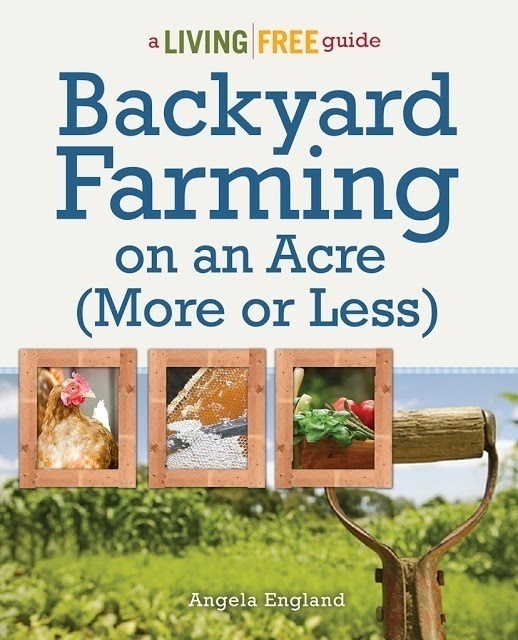I grew up on an acreage north of a small farming town in central Alberta. We owned just under four acres, which allowed us to do some backyard farming with a large garden, a big raspberry patch, an apple orchard, and space for a flock of chickens, a few sheep, and some ducks, turkeys, and calves. A lot of the food on our table—meat, fruit and vegetables—came from our own yard.
As a child, I didn’t really appreciate having to weed the garden or pick the raspberries, but now, I wish I had just of bit of my own land on which to have a garden, a berry bush—or a chicken or sheep. So Angela England’s new book Backyard Farming on an Acre (More or Less) caught my attention. Angela and her husband (and their five children) have half an acre on which they raise goats, fruits, and vegetables.
I received a copy of this book for review courtesy of the author; all opinions expressed are my own. This post contains affiliate links; as an Amazon Associate, I earn from qualifying purchases.
Overview of Backyard Farming
Backyard Farming is a step-by-step guide for anyone who wants to make the most of their backyard—whatever size it is.
In Part 1 (Living Large on a Small Scale), Angela discusses the growing food crisis, an earth-friendly lifestyle, cost and health considerations, and the benefits of small-scale farming. She talks about what land you need to start farming.
Part 2 (Gardening on a Backyard Farm) goes into planning the garden space and looks at the skills and tools needed by the backyard farmer. Specific chapters deal with vegetables, herbs, and fruits/berries.
Part 3 (Animals for a Backyard Farm) looks at raising chickens, rabbits, sheep and goats, and bees.
In Part 4 (Enjoying the Bounty), Angela shares tips for managing your harvest, home canning and freezing produce and meat, dehydrating and smoking, root cellars and basements, and preserving herbs.
Finally, Part 5 (Crafting from the Backyard Farm) looks at even more ways to use the produce of your farm, from making butter, yogurt and cheese to home brewing cider and wine.
My Thoughts on Angela’s Book
In her introduction, Angela talks about her journey from city kid to backyard farmer and says, “Backyard farming is about creating a healthier family, a healthier food system, and a healthier Earth for yourself and those who come after you. It’s about recapturing the balance of years gone by, married with the knowledge and breakthroughs of modern ages. Everyone’s journey into backyard farming is unique, and that’s the beauty of it.
I flipped first to Angela’s chapters on raising sheep and chickens, because that’s what I remember from my growing up years. I was very impressed with the amount of information she included—she covers everything you need to know about raising these animals. Reading brought back memories of how we cared for our animals. Angela also continues to talk about the “why” as well as the “how,” such as the fact that pasture-raised chickens produce much more nutritious eggs than commercially produced eggs. Having grown up on free-range eggs, I can tell you that there’s a world of difference between those eggs and the eggs you’ll find in a store.
Last summer, I made a small attempt to grow some lettuce on our patio. It failed miserably, but this year, I have Angela’s guide to help me consider what herbs or plants might work in our south-facing patio—and exactly what sort of care they might need. Since we’re renting right now, and only have a patio, that’s about all the “farming” I can do for now, but I’m excited to give it a try.
If any of the topics in Backyard Farming caught your attention, I’m sure that you’ll also find it an invaluable resource.


One Response
Sounds like an awesome book.
We’ve done the opposite of your journey. My hubby and I are currently on 5 acres with 2 cows, after being totally city people all our lives.
Rob loves going out to cut wood, and putter. We haven’t tried a garden, because I really wouldn’t know what to plant… but I’d love some chickens and that’s our next endeavor.
I’m visiting from Fellowship Fridays – great to connect.